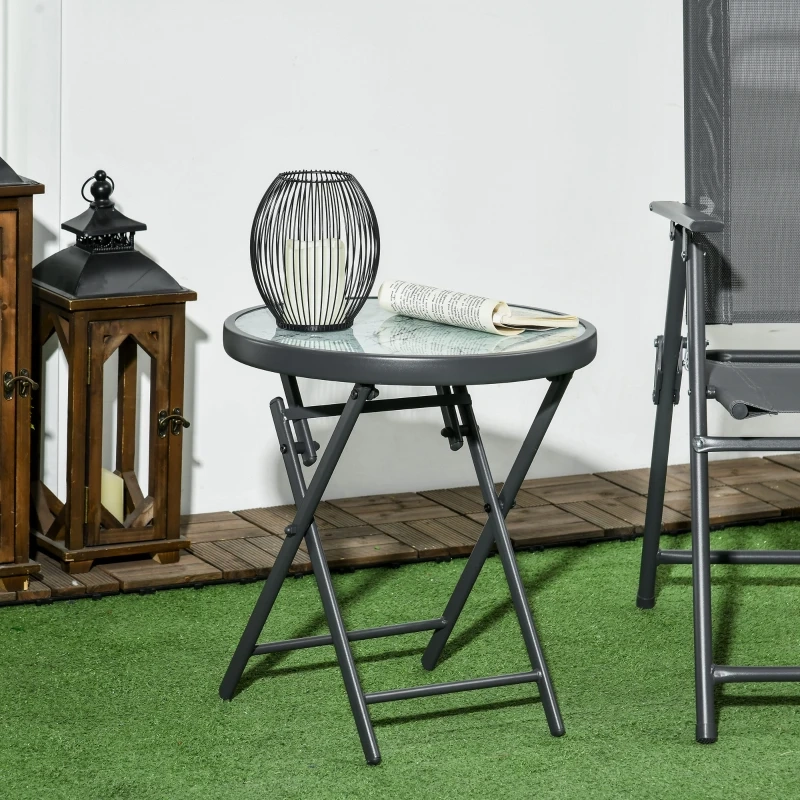Moving a shed is a challenging yet necessary task for homeowners looking to reorganize their backyard, relocate, or repurpose an existing structure. Whether you need to move a shed a few feet or transport it to an entirely new location, planning and proper tools are essential.
This guide provides a step-by-step approach to moving a shed safely, along with cost considerations, required permits, and the best tools available from Aosom. Follow these essential steps to ensure a smooth relocation process.
1. Preparing to Move Your Shed
Assess the Shed’s Condition
Before moving a shed, check its structural integrity:
- Look for wood rot, rust, or weak spots that might compromise stability.
- Decide whether disassembly or whole transport is the best option.
Clearing Out the Shed
- Before you move your Walk-in Garden Greenhouse, start by removing all tools, furniture, and stored items. This not only lightens the load but also helps prevent any damage during the move. Be sure to secure any loose parts, such as doors or windows, so they don’t shift while being transported.
- Secure any loose parts like doors or windows to prevent shifting during transport.
Planning the Moving Route
- Identify and remove obstacles like trees, fences, or rocks.
- Ensure there is enough clearance for transport, especially if using a trailer.
Gathering the Right Tools & Equipment
Depending on the moving method, you’ll need
- Jacks – To lift the shed off the ground.
- Dollies/Rollers – For easy manual transport.
- Straps & Ropes – To secure the shed.
- Trailers – If transporting over long distances.
2. Understanding Cost and Budget Considerations
DIY vs. Professional Shed Moving Costs
| Cost Factor | DIY Cost Estimate | Professional Service Cost |
| Equipment Rental | $50 – $300 | Included in service |
| labour | Free (Your Time) | $200 – $800 |
| Permit Fees | $50 – $150 | $50 – $150 |
| Damage Repairs | Variable | Less Likely |
When to Hire Professionals vs. DIY
DIY Move:
✔ Best for small sheds (under 8×8 feet) ✔ If you have the necessary tools ✔ Short-distance moves
Hire a Professional:
✔ Large, heavy sheds ✔ Long-distance moves ✔ Avoiding damage and liability

3. Legal and Safety Considerations

Legal & Permit Requirements
- Check with local zoning laws for shed-moving permits.
- If transporting via public roads, oversized load regulations may apply.
Safety Precautions
- Wear protective gear (gloves, boots, safety goggles).
- Secure the shed with straps to prevent shifting.
- Use proper lifting techniques to avoid injuries.
4. Choosing the Best Moving Method
Manual Moving Without Heavy Equipment
Best for: Lightweight sheds, short distances
- PVC Pipes & Wooden Skids: Roll the shed over placed pipes.
- Levers & Planks: Lift and slide the shed carefully.
Using Equipment for Easier Transport
Best for: Medium to large sheds
- Use hydraulic jacks to lift the shed onto dollies.
- Rollers & Skids for smooth movement.
- Trailers for long-distance transport.
Disassembling vs. Moving Whole
Disassemble if: ✔ The shed is too large or weak to move as a whole ✔ The route has tight turns or obstacles ✔ You want to reinforce the structure before relocation
Reassembly Tips:
- Label and store screws, panels, and roofing separately.
- Reinforce the base and joints for added durability.
5. Preparing the New Shed Location

Level the Ground for Stability

Before placing your Metal Garden Storage Shed, it’s important to ensure the ground is level. Use gravel or concrete blocks to create a solid, even base. This step helps prevent uneven settling, providing a stable foundation and reducing the risk of structural issues over time. Ensure that the ground where your shed will be placed is level. Use gravel or concrete blocks to create a stable and even base. This will prevent any uneven settling and provide a solid foundation for your shed, helping to avoid structural issues over time.
Ensure Proper Drainage and Secure the Shed
To prevent water damage and keep your shed safe during heavy rain, ensure proper drainage around the base. You can use gravel or a drainage mat to facilitate water flow away from the shed. Additionally, secure the shed with anchoring kits to prevent shifting in bad weather, keeping it stable and safe through storms.
6. Moving Different Shed Types
Wood vs. Metal vs. Plastic Sheds
| Shed Type | Moving Difficulty | Recommended Method |
| Wood | High | Requires reinforcement, heavy-duty tools |
| Metal | Medium | Lighter but may dent easily, secure well |
| Plastic | Low | Easy to move but must be properly supported |
7. Long-Distance Shed Moves

- Use flatbed trailers for interstate transport.
- Protect the shed from weather exposure (tarps & covers).
- Secure permits if transporting through multiple jurisdictions.
- Get this relevant product from here
Pro Tip:
For added durability and longer-lasting use, consider placing your Outsunny 30″ x 21″ x 71″ Garden Storage Shed on a level, gravel base. This will help with drainage, prevent moisture buildup, and keep the shed stable through all weather conditions. Additionally, regularly check for any debris around the shed to ensure proper ventilation and avoid any potential damage over time.
8. Troubleshooting Common Issues
What if My Shed is Too Heavy?
- Reinforce and disassemble parts to reduce weight.
- Use heavy-duty rollers or machinery.
Fixing Damage After Moving
- Repair cracks, loose panels, and foundation issues before reuse.
- Check for waterproofing and insulation gaps.
9. Shed Moving Accessories & Purchasing Guide

Essential Tools for Moving Your Shed
For a smooth shed relocation, you’ll need basic tools like hydraulic jacks to lift the shed, dollies or rollers for easy movement, and straps to secure the shed during transport.
Reinforcement and Anchoring Kits
Ensure your shed stays intact with reinforcement kits for added stability. Once at the new location, use anchoring kits to secure the shed against shifting in bad weather.
Protective Covers
Protect your shed from weather damage during the move with weatherproof tarps or covers. These will safeguard the shed from rain, dirt, or debris during transport.
Essential Moving Tools Available at Aosom
| Product | Purpose |
| Hydraulic Jacks | Lifting heavy sheds |
| Dollies & Rollers | Rolling sheds smoothly |
| Anchoring Kits | Secure sheds post-move |
10. Tips for Successfully Moving Your Shed

1. Assess the Shed’s Condition Before Moving
Before starting, inspect your shed for any structural damage. Look for issues like wood rot, rust, or weak spots that could affect the stability during transport. If the shed is in poor condition, disassembling it might be a better option. A thorough check ensures that your shed is ready for the move and prevents accidents later.
2. Clear Out All Items
Empty the shed of any tools, furniture, or stored items to reduce weight and prevent damage during the move. This not only lightens the load but also prevents any items from shifting and causing damage to the shed’s interior or exterior.
3. Plan Your Moving Route
Carefully map out your route before moving. Check for obstacles such as trees, fences, or rocks that might hinder the process. It’s also a good idea to measure any narrow paths to ensure your shed will fit through. Planning your route helps avoid unexpected challenges.
4. Use Proper Equipment
Moving a shed requires the right tools for safe and efficient transport. Jacks, rollers, and dollies are essential for lifting and moving the shed. Additionally, straps and ropes will help secure the shed during transport, ensuring it doesn’t shift or fall during the process.
5. Consider Disassembling for Large Sheds
For large or heavy sheds, disassembling them before the move might be the best option. This reduces the weight and makes the shed easier to transport. Label and store all screws, panels, and pieces carefully to ensure a smooth reassembly process.
6. Level the New Location
Before placing your shed in its new spot, make sure the ground is level. Use gravel or concrete blocks to ensure a stable foundation that will prevent shifting. Proper leveling helps to avoid any water damage by ensuring that rainwater drains away from the shed.
FAQs
1. Can I move a shed by myself?
Yes, if the shed is small and lightweight. Use rollers, jacks, and dollies for assistance.
2. How much does it cost to move a shed?
DIY costs range from $50–$300, while professional movers may charge $200–$800, depending on size and distance.
3. Do I need a permit to move a shed?
Check local regulations. Moving a shed within your yard usually doesn’t require a permit, but transporting it via roads might.
4. What’s the best method for moving a large shed?
A trailer or flatbed truck is ideal for long distances. Use jacks and rollers for short distances.
5. Can I move a shed without dismantling it?
Yes, if it’s structurally sound and accessible. Otherwise, partial disassembly may be necessary.














